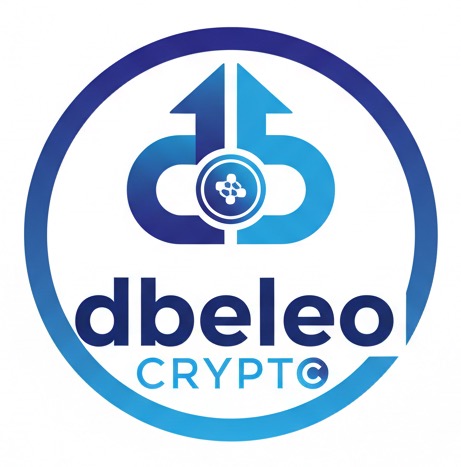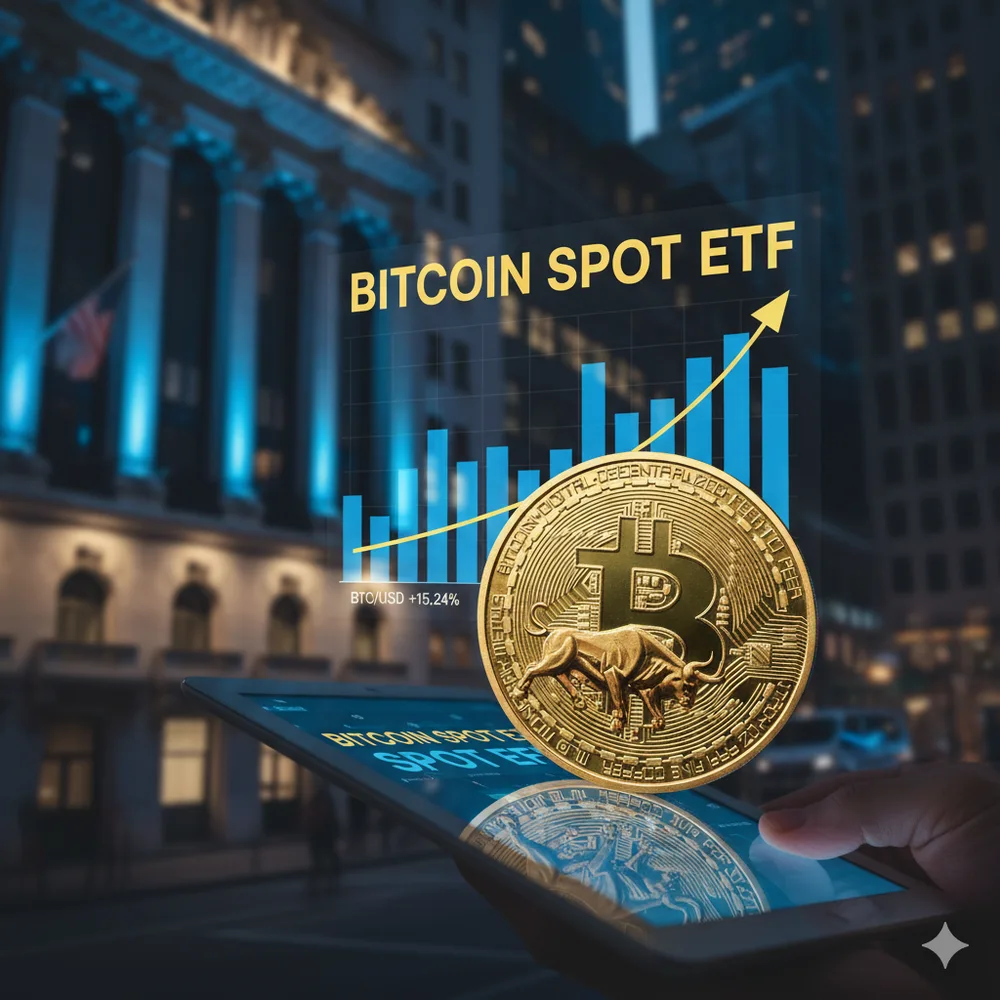The regulatory approval and explosive growth of US Spot Bitcoin Exchange-Traded Funds (ETFs) in early 2024 mark a watershed moment for the digital asset class within traditional financial markets. This approval spurred unprecedented capital formation, culminating in an industry Assets Under Management (AUM) reaching approximately $134.6 billion by the third quarter of 2025.1 This market shift has simultaneously highlighted a critical structural divergence between the US products, typically organized as Regulated Investment Company (RIC) trusts, and their established UK/European counterparts, which are legally structured as Exchange-Traded Products (ETPs) or Exchange-Traded Commodities (ETCs) backed by collateralized
debt securities.2 This legal disparity creates distinct risk profiles: US ETFs benefit from the highly tax-efficient in-kind creation/redemption mechanism (approved July 2025) 3, fundamentally enabling capital gains avoidance strategies. In contrast, European ETP investors face residual issuer counterparty risk, a risk mitigated by robust security trustee mechanisms and adherence to stringent MiFID II and Prospectus Regulation transparency requirements.2
For institutional traders, a nuanced understanding of these jurisdictional structures is mandatory for optimizing capital deployment and managing basis risk. The initial US restriction to cash-only creation mechanisms historically introduced operational friction and potential volatility in Net Asset Value (NAV) tracking error.6 The subsequent approval of in-kind transactions significantly tightened arbitrage bands and streamlined the Authorized Participant (AP) mechanism. The sheer scale and resultant cost efficiency of the US market, exemplified by industry leader BlackRock’s iShares Bitcoin Trust (IBIT) offering a low expense ratio of 0.12% 7, drives global fee compression. Furthermore, the rapid regulatory maturation, including the approval of non-staking Spot Ether ETFs (July 2025) 8, necessitates continuous structural analysis to anticipate the regulatory trajectory for subsequent altcoin exposures and maintain optimal cross-jurisdictional liquidity management.
Section 1: Core Mechanics: Spot vs. Derivatives ETPs
How do Spot Bitcoin ETPs fundamentally mitigate the Contango Risk inherent in Cash-Settled Futures Products?
Key Takeaways for Trading:
Spot ETPs eliminate the performance drag caused by rolling futures contracts during market Contango.
Investors gain exposure closely tracking the Bitcoin Reference Rate, improving predictive modeling accuracy.
The absence of futures expiration reduces the risk profile for long-term institutional capital deployment.
This structural purity allows for superior alignment between the ETP’s share price and the underlying Net Asset Value (NAV).
1.1. Physical Backing as the Structural Superiority Principle
Institutional capital prioritizes investment vehicles that minimize non-systemic risk and maximize the long-term correlation to the underlying asset’s spot price. Spot ETPs, regardless of whether they are governed by US or European regulations, achieve this by mandating the holding of the physical asset (Bitcoin) in institutional cold storage.2 This requirement provides a direct, delta-one exposure to the asset’s price movements.
This physical link establishes a structural superiority over synthetic or derivatives-based products. By bypassing the necessity of managing futures contracts or other complex financial instruments to replicate price movement, the spot model eliminates several layers of operational complexity and inherent basis risk. This confirmation of the spot structure as the standard for passive, long-only Bitcoin exposure explains its overwhelming preference among major asset allocators.
1.2. Why does the Futures Market’s Term Structure introduce non-systemic basis risk for investors seeking long exposure?
Derivatives-based ETPs, such as the initial US Bitcoin Futures ETFs, derive their value from Bitcoin futures contracts, exposing investors to the complexities of the futures market’s term structure, specifically the phenomena of Contango and Backwardation.9 Contango occurs when futures contract prices are higher than the current spot price, suggesting expectations of future price increases or reflecting a cost of carry. Conversely, Backwardation is the state where the spot price exceeds the futures price.9
This structure introduces non-systemic basis risk. In a persistent state of Contango, a futures ETF holding long positions must continually “roll” expiring, lower-priced contracts into higher-priced, longer-dated contracts to maintain exposure. This consistent, negative roll yield translates into a persistent performance drag, causing the futures ETF’s return to significantly underperform the actual Bitcoin spot price over extended periods.9 The performance erosion is directly attributable to the cost of maintaining the synthetic exposure.
Spot ETPs are structurally immune to this yield erosion because their value is derived directly from the underlying asset held in custody, typically benchmarked against a recognized index like the CME CF Bitcoin Reference Rate.10 The elimination of Contango risk is not merely an incremental benefit; it fundamentally converts Bitcoin, when held via a spot ETP, from an asset requiring active tactical management (such as basis trading desks) into a pure strategic allocation asset. This structural simplicity is the central catalyst for the subsequent institutional preference and the massive scale of capital inflows observed in the regulated spot market.
Also read: Top 10 Crypto Price Predictions & Market Analysis for 2025-2026
Section 2: The US Spot ETF Model & Institutional Impact
What are the systemic implications of the SEC’s transition from Mandatory Cash-Create to Optional In-Kind Redemption for US Bitcoin ETFs?
Key Takeaways for Trading:
The 2025 shift to in-kind creation enables APs to reduce their capital commitment and lower operational costs.
In-kind redemptions may facilitate greater tax efficiency by enabling capital gains avoidance mechanisms (heartbeat trades).
The initial Cash-Create mandate increased operational complexity, often resulting in wider bid-ask spreads.
US market scale, exemplified by IBIT’s $90.87 billion AUM, drives unparalleled cost competition globally.
2.1. The Regulatory Evolution and AP Friction
Upon the launch of the first US spot Bitcoin ETFs in early 2024, the Securities and Exchange Commission (SEC) imposed a “cash-only” creation and redemption requirement.11 This mandate stemmed from regulatory concerns regarding the lack of broker-dealer registration among many potential Authorized Participants (APs) and the operational uncertainties surrounding the custody and handling of cryptoassets.6
This regulatory constraint introduced significant operational friction. The cash-only model required APs engaging in a creation event to navigate a complex, multi-step process: the AP delivers cash to the issuer, who then purchases Bitcoin on the spot market, and subsequently the AP receives ETF shares to sell to the public. This complexity increases market timing risk, capital deployment overhead, and overall operational costs for APs.6 The added friction necessitates a wider bid-ask spread to compensate the APs for the cost of maintaining market neutrality and managing the cash-to-crypto conversion risk.
A major policy shift occurred on July 29, 2025, when the SEC approved the use of optional in-kind creations and redemptions for crypto ETPs.3 This crucial move aligned US crypto ETPs with the long-established practices governing traditional commodity and equity ETFs, significantly streamlining the AP mechanism and lowering the systemic costs associated with arbitrage.
2.2. How does the Cash-Create mechanism affect arbitrage efficiency and result in potential increases to the Net Asset Value (NAV) tracking error?
The effectiveness of the ETF arbitrage mechanism in keeping the market price aligned with the Net Asset Value (NAV) is fundamentally dependent on the cost and complexity of the creation/redemption process. During the cash-only mandate, the increased operational steps required APs to incorporate higher risk premiums into their pricing, which inevitably widened the arbitrage band. Consequently, the ETF share price was permitted to deviate further from the NAV before an arbitrage opportunity became sufficiently profitable to justify the operational complexity, potentially resulting in greater NAV tracking error.4
The post-July 2025 allowance for in-kind creations fundamentally enhances arbitrage efficiency. In the in-kind model, the AP can deliver the underlying Bitcoin directly to the issuer in exchange for new shares, or receive the physical Bitcoin upon redemption, eliminating the forced cash conversion steps.6 This reduction in operational friction leads to tighter convergence between the market price and NAV, resulting in a structurally lower tracking error over time—a key metric for institutional fund evaluation.
2.3. Tax Basis Management and the Mechanism of In-Kind Tax Efficiency
The most profound impact of the shift to the in-kind mechanism relates to tax efficiency, particularly for US-based investors and high-net-worth capital. The US tax code provides a critical advantage to ETFs through the tax exemption for in-kind distributions of appreciated property.4 When a redeeming Authorized Participant receives appreciated underlying assets (Bitcoin) directly, rather than the fund selling the assets for cash, the ETF trust does not recognize a capital gain.3
This mechanism allows the ETF manager to strategically manage the fund’s overall tax liability. APs and ETFs can utilize this rule in “heartbeat trades,” wherein appreciated shares (in this case, Bitcoin that has seen significant gains) are distributed tax-free to the redeeming AP.4 This process permits the fund to cleanse its portfolio of low-cost basis assets without triggering a taxable event for remaining long-term shareholders. Therefore, the approval of optional in-kind creation and redemption is not just an operational footnote; it grants US Bitcoin ETFs the same highly valued, long-term tax advantage as traditional equity ETFs, creating a critical economic incentive unavailable in cash-settled or foreign debt-structured products.
2.4. How does the concentration of custody risk among a few providers, such as Coinbase, affect systemic market stability and counterparty risk evaluation?
The scale of the US Spot ETF market has generated an unprecedented concentration of digital assets under the custody of a few specialized providers. By Q3 2025, the total US Spot ETF AUM had reached approximately $134.6 billion.1 The iShares Bitcoin Trust (IBIT) alone quickly amassed over $50 billion in assets within 11 months, setting a record for the fastest ETF growth.1 Multiple major US issuers rely on centralized custody solutions, with Coinbase Institutional, a key player, securing roughly 12% of the total crypto market capitalization.13
This high reliance on a small number of institutional custodians creates a systemic vulnerability, requiring heightened institutional due diligence. Risk management desks must focus intensely on the robustness of the custody infrastructure, including cutting-edge encryption, physical safeguards, and multi-factor controls designed to eliminate single points of compromise.13 Furthermore, due diligence must evaluate the specific legal structure of asset segregation, ensuring that client assets are bankruptcy-remote, and confirming the size and scope of the custodian’s commercial crime insurance policies. Any security breach or catastrophic operational failure at this critical infrastructure layer could cascade across the entire regulated digital asset market, impacting the portfolios of hundreds of institutions.
Table 1 provides a snapshot of the competitive landscape and structural efficiency metrics following the initial launch period and subsequent regulatory shifts in the US market.
Key Metrics and Structure for Major US Spot Bitcoin ETFs (Q4 2025)
| Product (Ticker) | Issuer | AUM (USD Bn) | Expense Ratio (ER) | Creation/Redemption (Post-July 2025) | Key Tax Feature | Data Source |
| iShares Bitcoin Trust (IBIT) | BlackRock | 90.87 | 0.12% | Optional In-Kind | Capital Gains Mitigation | 7 |
| Fidelity Wise Origin (FBTC) | Fidelity | 24.12 | 0.25% | Optional In-Kind | Capital Gains Mitigation | 7 |
| Grayscale Bitcoin Trust (GBTC) | Grayscale | 20.75 | 1.50% | Optional In-Kind | High ER Driving Rotation | 7 |
| Total US Spot ETF AUM | Industry | 134.6 | N/A | N/A | N/A | 1 |
Also read: The Next Gaming Gold Rush? Exploring the Top 5 Emerging Web3 Game Platforms to Watch Now
Section 3: The UK & UCITS Challenge: Why ETPs/ETCs are not ETFs
Why are European Crypto Exchange-Traded Products (ETPs) structurally dissimilar to US ETFs and what are the resulting investor protection consequences under the UCITS regime?
Key Takeaways for Trading:
European ETPs are legally debt securities, exposing investors to potential issuer counterparty risk, albeit mitigated by collateral.
The UCITS framework typically restricts pure delta-one crypto products, limiting retail distribution across much of Europe.
The UK’s proposed lifting of the retail ban (2025) signals a major divergence in accessibility and regulatory philosophy.
European ETPs operate with a wider range of TERs and often rely on smaller, fragmented exchange liquidity.
3.1. The Secured Note Legal Structure vs. The US Trust Model
The fundamental structural disparity lies in the legal wrapper. While US Spot Bitcoin products are structured as investment trusts or Regulated Investment Companies (RICs), European ETPs, which often include Exchange-Traded Commodities (ETCs), are legally structured as secured notes or debt instruments.2 These notes are typically issued by a Special Purpose Vehicle (SPV).
The issuance of the ETP as a debt security introduces a form of issuer counterparty risk. Unlike the US trust model, where the investor holds a direct fractional claim on the underlying Bitcoin, the European investor holds a claim against the SPV issuer, with that claim collateralized by the physical Bitcoin held in custody.2 Should the issuer face insolvency, the investor must rely on the collateralization mechanisms to recover the underlying assets. This risk, while often small, requires careful evaluation. Mitigation strategies include features like security trustees, bankruptcy remoteness provisions, and segregated collateral accounts designed to protect the investor’s claim.2 Institutional investors must therefore perform rigorous legal and jurisdictional due diligence (e.g., examining structures domiciled in Jersey or Switzerland) and scrutinize the specific collateral agreements.5
3.2. How do the limitations imposed by the UCITS Directive constrain the physical replication and passporting capabilities of these European vehicles?
The UCITS (Undertakings for Collective Investment in Transferable Securities) Directive forms the core regulatory framework for many retail investment products across the European Union, prioritizing investor protection through strict rules on diversification, liquidity, and asset eligibility. Single-asset, highly volatile instruments like pure Bitcoin ETPs generally fail to comply with UCITS diversification requirements; they are therefore not UCITS-eligible ETFs.
This incompatibility prevents European Bitcoin ETPs from utilizing the EU’s “passporting” mechanism for broad retail distribution. Instead, ETPs are governed by the MiFID II and Prospectus Regulation frameworks, which often necessitate that the products be marketed predominantly to professional or institutional investors.14 This limitation significantly constrains the market accessibility of these products compared to the US retail-accessible ETF structure.
However, regulatory philosophies are evolving. In a significant divergence, the UK Financial Conduct Authority (FCA) is currently proposing to lift its multi-year ban on retail investors buying crypto ETPs, provided investors can demonstrate appropriate knowledge of the high-risk nature of the investment.15 This move is intended to bolster the UK’s financial competitiveness and acknowledge the maturing asset class, though the ban on retail access to crypto asset derivatives remains in place.15
3.3. European ETP Costs and Market Fragmentation
The European ETP market exhibits a wider, yet highly competitive, range of Total Expense Ratios (TERs, or Ongoing Charges). While US scale has driven IBIT’s expense ratio to 0.12% 7, leading European providers offer highly competitive rates, often achieving this through asset growth and initial fee waivers. For example, the WisdomTree Physical Bitcoin ETP maintains a TER of 0.15%, with AUM totaling approximately $1.50 billion.16 BlackRock’s iShares Bitcoin ETP (IB1T) offers an initial TER of 0.15% (waived until 2026), managing an AUM of $640.5 million as of Q4 2025.10 Other leaders, like CoinShares Physical Bitcoin, have AUM of approximately $2.08 billion with a TER of 0.25%.16
The critical difference for trading desks is the market structure. The European market remains fragmented, with ETPs listed across numerous national exchanges (e.g., LSE, Xetra, SIX Swiss Exchange). This fragmentation prevents the deep, singular pools of liquidity characteristic of the major US exchanges. This necessitates increased operational complexity for Authorized Participants, such as Flow Traders and Jane Street Financial 5, who must aggregate liquidity across disparate venues, potentially leading to increased bid-ask spreads and higher implicit trading costs.
Comparative Institutional Metrics: Major European Physical Bitcoin ETPs (Q4 2025)
| Product (Ticker) | Provider | Legal Structure | AUM (USD Bn) | Total Expense Ratio (TER) | Retail Accessibility | Data Source |
| CoinShares Physical Bitcoin | CoinShares | Secured Note (Debt) | 2.08 | 0.25% | Professional Only (Currently) | 16 |
| WisdomTree Physical Bitcoin | WisdomTree | Secured Note (Debt) | 1.50 | 0.15% | Professional Only (Currently) | 16 |
| iShares Bitcoin ETP (IB1T) | iShares (BlackRock) | Secured Note (Debt) | 0.64 | 0.15% (Initial) | Professional Only (Currently) | 10 |
Section 4: Advanced Trading & Arbitrage Dynamics
What advanced strategies can professional traders deploy to capitalize on differences in tracking error, liquidity depth, and premium/discount volatility between US and European products?
Key Takeaways for Trading:
The tax efficiency of US in-kind redemptions creates unique opportunities for APs and desk arbitrage.
Tracking error analysis reveals that high-friction, cash-settled funds tend to exhibit greater NAV divergence.
Monitoring cross-market liquidity depth is critical for executing large block trades without significant market impact.
The legal form (Trust vs. Debt) dictates the specific type of default risk that must be priced into arbitrage models.
4.1. To what extent does the creation/redemption structure (Cash vs. In-Kind) influence the frequency and magnitude of premium/discount volatility across global Bitcoin ETPs?
Arbitrage profitability is fundamentally determined by the efficiency of the capital creation and redemption process. The cash-only mechanism previously mandated in the US increased the inherent operational cost and market timing risk for APs, thereby requiring a wider premium/discount band before a corrective arbitrage trade became economically justifiable.6 When market stress increases, bid-ask spreads can widen, and the ETP share price can diverge significantly from the calculated NAV.4
The shift to the in-kind mechanism in the US directly lowers this friction. By streamlining the process and reducing capital deployment overhead, the in-kind model compels tighter convergence between the market price and NAV. This means US Spot ETFs are expected to exhibit structurally lower tracking error and reduced premium/discount volatility compared to cash-settled alternatives, offering institutional buyers greater certainty in execution price relative to NAV. This operational efficiency becomes a competitive differentiator for APs and a key performance indicator for institutional portfolio managers.
4.2. Pricing Risk: Integrating Legal Structure into the Arbitrage Model
A professional trader engaging in cross-jurisdictional arbitrage must integrate the specific legal risk into their pricing and risk models. The US trust structure, coupled with in-kind creation, largely insulates investors from tax-related portfolio adjustments, shifting the focus of risk assessment primarily to the operational security and solvency of the centralized custodian (e.g., Coinbase).13
Conversely, arbitrage in European ETPs, structured as secured notes, must incorporate the effectiveness of the collateralization mechanism during potential issuer default.2 Although the probability of issuer default is low for established firms, the structure requires pricing in a residual counterparty credit spread specific to the SPV issuing the debt security. Therefore, a European ETP’s tracking error may be marginally higher not only due to fragmented trading liquidity but also due to the necessity of pricing this underlying legal/credit risk, a factor generally absent in the direct ownership rights provided by the US trust model.
4.3. Market Impact and Execution Strategy in Fragmented Markets
The vast difference in scale between US and European offerings directly dictates execution strategies for large block orders. The centralized liquidity of the US market, with its leading product IBIT holding approximately $90.87 billion AUM 7, allows for massive, high-depth trades with minimal market impact or slippage. APs can execute creation/redemption orders that efficiently clear substantial capital flows.
In contrast, the trading liquidity of European ETPs is scattered across multiple national exchanges. Executing a large order—one that might be trivial in the US—across the fragmented European landscape requires sophisticated trading systems, often employing advanced smart order routers (SORs) to aggregate liquidity from multiple venues simultaneously.5 For institutional desks, this fragmentation increases the operational cost and complexity associated with ensuring minimal price elasticity when entering or exiting large positions. This need for multi-venue liquidity aggregation is a primary factor contributing to the higher implicit transaction costs in the European market relative to the singular, deep pool in the US.
Also read: Crypto Trading vs. Part-Time Job: Exploring Trading Strategies for Students
Section 5: Conclusion: Capital Flows and Future Regulatory Trajectories
How will the massive capital rotation from older trusts and futures products reshape the long-term capital structure of the digital asset market?
5.1. The Great Capital Rotation and Fee Compression
The regulatory validation provided by the US Spot ETF approval generated a definitive structural acceptance of Bitcoin within traditional finance, evidenced by the cumulative institutional inflow driving total AUM to $134.6 billion by Q3 2025.1 This influx triggered an immediate and intense period of fee compression. Issuers, competing for institutional mandates, drove average expense ratios down to highly competitive levels, exemplified by IBIT’s 0.12%.7
This trend directly catalyzed a massive rotation of capital away from higher-fee incumbent structures. Most notably, the high expense ratio of Grayscale’s Bitcoin Trust (GBTC) at 1.50% 7 spurred significant outflows as investors rotated into structurally more efficient, lower-cost competitors. This consolidation of capital into low-cost, regulated vehicles permanently alters Bitcoin’s market dynamics. Its price action is now increasingly correlated with traditional institutional flow cycles, such as quarterly rebalancing and risk-on/risk-off sentiment in the broad macro environment, signifying a deep integration into global capital markets.
5.2. What structural challenges remain for the SEC and other regulators in approving spot ETPs for Altcoins beyond Ether, given security status ambiguities?
Following the Bitcoin precedent, the US SEC provided further regulatory clarity by approving Spot Ether ETFs in July 2025, with trading commencing immediately thereafter.8 This approval established a definitive roadmap for subsequent digital asset spot products.
The critical stipulation of the Ether ETF approval was the mandate that the funds must preclude any staking of the underlying Ether.1 This non-staking requirement addresses specific regulatory concerns related to classifying the asset or the fund as a security under the Howey Test. Staking—the act of generating yield and participating in network consensus—introduces complex regulatory factors that could potentially categorize the underlying altcoin as an investment contract.
Therefore, any future US Spot ETP application for a Proof-of-Stake altcoin, such as Solana 17, must strictly adhere to a non-staking, pure-exposure model to minimize regulatory friction and avoid potential classification as an Investment Company.1 The regulatory focus has decisively shifted from determining the commodity status of the core asset (Bitcoin/Ether) to scrutinizing the operational functions and yield-generation capabilities of subsequent assets. Issuers are now required to demonstrate adequate market surveillance and ensure the ETP maintains the principle of a simple investment trust, offering exposure without generating passive returns.
FAQ
A Spot Bitcoin ETF directly holds the physical asset, eliminating the structural performance drag and basis risk associated with futures contract rolling, particularly during prolonged periods of market contango.
The US ETF is typically a Regulated Investment Company (RIC) trust where shareholders own a fractional claim on the underlying Bitcoin; the European ETP is generally a collateralized debt security issued by an SPV, exposing the investor to limited issuer counterparty risk.
The shift to in-kind creation and redemption (post-July 2025) allows US ETFs to distribute highly appreciated assets to Authorized Participants tax-free, strategically mitigating the realization of capital gains for remaining long-term shareholders.
The SEC initially cited concerns over the lack of regulated broker-dealer registration among many potential Authorized Participants and regulatory uncertainty surrounding the custody and transfer of cryptoassets.
The concentration of assets, with US Spot ETFs reaching $134.6 billion AUM and relying significantly on single institutional custodians (like Coinbase), raises systemic counterparty risk concerns that require enhanced due diligence.
Works cited
- Spot Bitcoin and Ethereum ETFs: A Game Changer for Institutional Crypto Adoption | User | theeveningleader.com – Stock Market | FinancialContent,:https://markets.financialcontent.com/theeveningleader/article/marketminute-2025-9-17-spot-bitcoin-and-ethereum-etfs-a-game-changer-for-institutional-crypto-adoption
- Physical Bitcoin Exchange-Traded Products (ETPs): everything you need to know,:https://coinshares.com/insights/knowledge/physical-bitcoin-etps-everything-you-need-to-know/
- The future of crypto ETPs | United States | Global law firm | Norton Rose Fulbright,:https://www.nortonrosefulbright.com/en-us/knowledge/publications/2a919dfb/the-future-of-crypto-etps
- Unplugging Heartbeat Trades and Reforming the Taxation of ETFs,:https://businesslawreview.uchicago.edu/print-archive/unplugging-heartbeat-trades-and-reforming-taxation-etfs
- Bitcoin ETP – Global X ETFs Europe,:https://globalxetfs.eu/funds/bt0x/
- Cash vs In-kind ETFs – BitMEX Blog,:https://blog.bitmex.com/cash-vs-in-kind-etfs/
- Bitcoin ETFs List – ETF Database,:https://etfdb.com/themes/bitcoin-etfs/
- Ether ETFs Trading: What Should You Know | Plus500,:https://us.plus500.com/en/newsandmarketinsights/ether-etfs-trading-what-should-you-know
- Understanding Spot Bitcoin ETF and Its Potential | Article – Chambers and Partners,:https://chambers.com/articles/understanding-spot-bitcoin-etf-and-its-potential-2
- iShares Bitcoin ETP | IB1T – BlackRock,:https://www.blackrock.com/no/individual/products/337088/ishares-bitcoin-etp
- SEC Approves In-Kind Creation and Redemption for Crypto …,:https://katten.com/sec-approves-in-kind-creation-and-redemption-for-crypto-exchange-traded-products
- The Fed – Crypto ETPs: An Examination of Liquidity and NAV Premium,:https://www.federalreserve.gov/econres/notes/feds-notes/crypto-etps-an-examination-of-liquidity-and-nav-premium-20250328.html
- The Standard in Crypto Custody – Coinbase,:https://www.coinbase.com/blog/coinbase-the-standard-in-crypto-custody
- ESMA_CP1_EADC_CoinShares.docx,:https://www.esma.europa.eu/system/files/webform/208572/105099/ESMA_CP1_EADC_CoinShares.docx
- As The UK Moves Closer to Bitcoin ETFs, Will Investors Benefit?,:https://global.morningstar.com/en-eu/etfs/uk-moves-closer-bitcoin-etfs-will-investors-benefit
- Crypto ETP EU – ETFbook.com,:https://www.etfbook.com/dashboards/crypto-etp-eu
- Crypto Titans Roar: Bitcoin, Ethereum, and Solana Charge Towards All-Time Highs Amidst ETF Inflows and Macroeconomic Shifts – Stock Market | FinancialContent,:https://markets.financialcontent.com/wral/article/breakingcrypto-2025-10-1-crypto-titans-roar-bitcoin-ethereum-and-solana-charge-towards-all-time-highs-amidst-etf-inflows-and-macroeconomic-shifts






